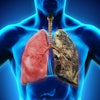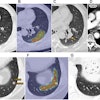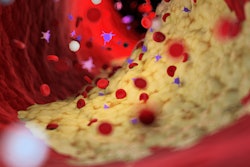Estimating the prevalence and severity of coronary artery calcium (CAC) using data gleaned from nongated chest CT imaging improves risk assessment of postsurgical major clinical events before a patient undergoes noncardiac surgery, according to research published in the October 10 issue of Circulation.
The study results could improve patients' surgical outcomes, wrote a team led by Daniel Choi, MD, of New York University Grossman School of Medicine in New York City.
"[Our study found that] prevalence and severity of coronary calcium from preexisting, preoperative, nongated chest CT imaging were associated with stepwise increases in perioperative major clinical events after major, noncardiac surgery," the group noted. "Because many patients have had recent nongated CT chest imaging before the time of preoperative risk assessment, this measure of coronary calcium may enhance clinical risk stratification before noncardiac surgery."
It's crucial to assess patients' preoperative cardiovascular risk before they undergo noncardiac surgery, but doing so can be challenging, Choi and colleagues explained. CAC scores from ECG-gated chest CT exams have been shown to help clinicians predict risk of major perioperative events (i.e., cardiac death or nonfatal myocardial infarction or cardiac arrest), according to the authors, but at perioperative evaluation, patients expected to undergo noncardiac surgery may only have had nongated chest CT studies.
Choi's group investigated any relationship between CAC severity estimated from previous nongated chest CT imaging exams and perioperative major clinical events after noncardiac surgery, using data from the Existing Nongated CT Coronary Calcium Predicts Operative Risk in Patients Undergoing Noncardiac Surgeries (ENCORES) study. The team conducted a study that included 2,554 adults aged 45 and older who underwent in-hospital, major noncardiac surgery between 2016 to 2020; all patients had nongated chest CT imaging (either with contrast, 58.1%, or without contrast 41.9%) within one year before surgery.
Surgery types included the following:
- General (29.4%)
- Orthopedic (16.8%)
- Neurosurgical (13.9%)
- Thoracic (13.4%)
- Vascular (12.4%)
Most (82.3%) of these procedures used general anesthesia, the team noted.
Exam readers graded coronary calcium for each heart vessel using a 4-point scale (with 0 equal to no calcium, 1 equal to mild calcium, 2 equal to moderate calcium, and 3 equal to severe calcium). The investigators calculated patients' estimated coronary calcium burden as the sum of scores for each artery (scale of 0 to 9) and assigned a Revised Cardiac Risk Index (RCRI) score to each patient. (RCRI uses six variables -- history of ischemic heart disease, heart failure, stroke, insulin-dependent diabetes, chronic kidney disease, and high-risk surgery -- to assess risk of perioperative cardiac complications in noncardiac surgeries.)
The team reported the following:
- Median time from nongated chest CT imaging to noncardiac surgery was 15 days.
- Median estimated coronary calcium burden was 1, as was the median RCRI score.
- 5.2% of patients experienced perioperative major clinical events (myocardial infarction or death).
- Patients with any coronary artery calcium had higher risk of perioperative major clinical events than those without, at 6.8% compared with 2.9%.
- An estimated coronary calcium burden equal to or higher than 3 showed a twofold higher odds ratio of perioperative major clinical events than an estimated coronary calcium burden of less than three (odds ratio, 2.11, with 1 as reference).
The group also found that increased coronary calcium burden boosted a patient's risk of a major perioperative clinical event.
| Association of coronary calcium burden with perioperative major clinical events |
|
|---|---|
| Estimated coronary calcium burden score (range, 0 to 9) |
Rate |
| 0 |
2.9% |
| 1 to 2 |
3.7% |
| 3 to 5 |
8% |
| 6 to 9 |
12.6% |
Data from prior nongated chest CT exams shows promise for improving patient care, according to Choi and colleagues.
"Prevalence and severity of coronary calcium obtained from existing nongated chest CT imaging improve preoperative clinical risk stratification before noncardiac surgery," they concluded.
The complete study can be found here.




















